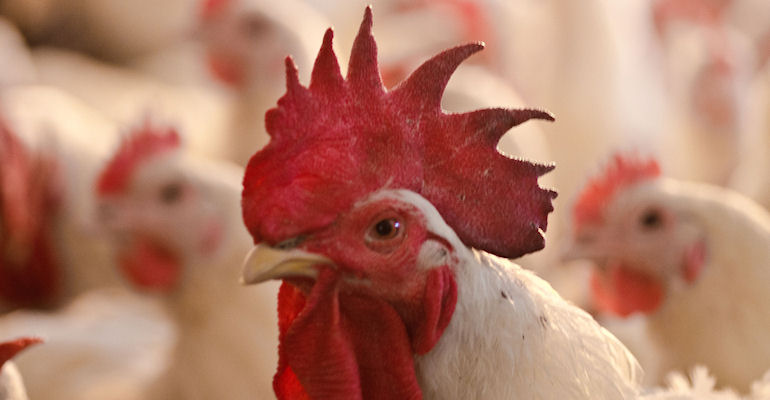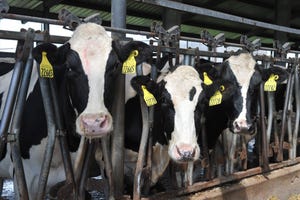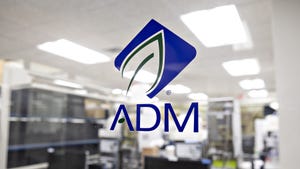Research presented at World's Poultry Congress
THE 25th World's Poultry Congress was held Sept. 5-9 in Beijing, China.
December 1, 2016

*Dr. William A. Dudley-Cash is a poultry and fish nutritionist and has his own consulting firm in Kamuela, Hawaii.
THE 25th World's Poultry Congress was held Sept. 5-9 in Beijing, China, and was co-organized by the China Branch of the World's Poultry Science Assn. and the Chinese Association of Animal Science & Veterinary Medicine.
Technical presentations consisted of 67 invited lectures and 1,500 submitted papers divided into 15 categories. The category of "Nutrition & Feeds," with 565 papers, made up more than a third of the submitted papers.
Copies of the invited lectures and abstracts of the papers may be found at www.wpc2016.cn.
Need for poultry research
T. Porter presented a lecture on a global perspective for future challenges and the need for poultry science research.
Globally, per capita consumption of poultry meat is estimated to have increased from 2.7 kg per person in 1960 to 13.6 kg per person today. Global consumption of chicken eggs has increased, particularly in developing countries. Global demand for poultry products is forecasted to continue to increase for the foreseeable future.
The increased consumption of poultry products has been driven by the reduced cost of poultry production resulting from improved production efficiency and increased consumer demand.
In the U.S., commercial broilers required 2.5 kg of feed for each kilogram of bodyweight gain in 1960. Today, that number is 1.6 kg of feed. At the same time, bodyweight has increased from 1.5 kg to 2.9 kg. The time required to reach market weight has decreased from 63 to 42 days. A major contributor to these improvements in performance and efficiency has been research in the fields of nutrition and genetics.
Other contributors to meat production efficiency include research on environmental management, animal health, poultry management, physiology, poultry processing, processing products and poultry meat stability.
Consumer segments that have expressed preferences in regard to real and perceived issues about the use of medications in poultry feed and provisions for animal welfare in the poultry production environment have stimulated research on implementing these preferences.
Research in many disciplines has led to dramatic improvements in poultry efficiency and yield that have improved performance and reduced costs of poultry production while increasing the number of poultry products for consumers.
It will require additional research in all of these disciplines and more to meet the challenges and demand of the future.
More research will be required on all of the issues that have led to the improvements achieved so far, and new areas of research must include the effects of climate change. Predictions suggest that the average temperature will rise 1.5-6.0 degrees C over the next 100 years. Increased frequencies of temperature spikes (heat waves) are also predicted to occur. These environmental changes will have effects on animal health, production and welfare. Heat stress in chickens can occur when temperatures reach more than 35 degrees C. Many countries have noted major chicken mortality as a result of heat waves. Research must develop the tools to deal with these issues: different birds, different management, different feeds, different housing environments, etc.
In addition to countries where poultry production is already well developed, research must provide the tools necessary to increase poultry production in other geographic areas. The challenges include small flock production and the use of a wider variety of feed ingredients with more emphasis on ingredients that are not preferred for human consumption.
Research must provide the answers to best management practices, best poultry breeds, best diets, etc., that are optimal for poultry production in those regions that are already under-producing food. These efforts should take into consideration the practical, social and political limitations specific to each area. Success most likely will be achieved by teams of scholars working in multiple disciplines, including management, genetics, nutrition, physiology, animal health, economics and sociology.
The Bottom Line
Poultry science research has resulted in amazing improvements in production efficiency, product yield, quality and animal health while continuing to expand consumer choice. In the future, more investment in poultry research will be required in order to meet consumer demand for a growing population with high-quality animal protein (chicken).
Reference
Porter, T.E. 2016. Future challenges and the need for poultry science research: A global perspective. World's Poultry Congress. Paper L2.
Broiler breeder metabolism
 Invited speaker C. Coon of the University of Arkansas presented the results of studies evaluating breast muscle protein turnover in broiler breeder Cobb 500 parent stock pullets and breeder hens.
Invited speaker C. Coon of the University of Arkansas presented the results of studies evaluating breast muscle protein turnover in broiler breeder Cobb 500 parent stock pullets and breeder hens.
For the trials, 150 day-old pullet chicks were assigned to each of four feeding regimes: everyday feeding, skip-a-day feeding (Cobb standard bodyweight curve), lighter bodyweight (20% under) and heavier bodyweight (20% over). The four feeding regimes were initiated at four weeks of age and continued until 20 weeks of age. The protein turnover rate was determined in pullets and breeders at 6, 10, 12, 16, 21, 25, 31, 37, 46 and 66 weeks of age.
A completely randomized design was used with a 4 x 10 factorial arrangement (four feeding regimes and 10 ages). Each pullet represented a replicate. For the measurement of protein turnover rate, five pullets/breeders, at each age, were given an intravenous flooding dose of 15N-Phe. After a delay of 10 minutes, the birds were euthanized, and the breast muscle (pectoralis major) was excised for the measurement of the protein fractional synthesis rate (FSR) and fractional degradation rate (FDR).
The Figure summarizes results of the research on the protein turnover rate. The FSR in breast muscle of pullets significantly increased from six weeks to 12 weeks and then decreased significantly by 25 weeks. FSR then increased significantly from 25 to 66 weeks.
FDR was relatively stable from six to 21 weeks and then markedly increased with the onset of sexual maturity, ultimately achieving nearly a five-fold increase during peak egg production (31-37 weeks) but then significantly decreasing after peak egg production. The authors suggested that these results show that, during peak production, broiler breeders rely on skeletal muscle tissue as an important source of nutrients.
In additional research, 12 Cobb 500 breeders were evaluated every three weeks, from 26 weeks to 59 weeks of age, for heat production and respiratory exchange ratio (RER) using indirect calorimetry. Body lean and fat composition was measured using dual X-ray absorptiometry. Feed allocation was 123 g per day (352 kcal) at 26.3 weeks and increased to 136 g per day (390 kcal) from 29.6 weeks to the end of production. The lighting program was 16 hours of light and eight hours of dark from 29.6 weeks.
Total heat production increased with age. Heat production during the dark period was 83 kcal/kg0.75, which could be considered resting metabolic rate, and 115 kcal/kg0.70 during the light period.
RER is the ratio of carbon dioxide produced to oxygen gas used in metabolism. An RER of 0.70 indicates that fat is the predominant fuel source, a value of 0.85 suggests a mix of fat and carbohydrates and a value of 1.00 or above is indicative of carbohydrates being the predominant fuel source.
RER decreased with age, suggesting that more fat was used later in production. Lean body mass was the highest (783 g/kg) at the beginning of the trial at 26-33 weeks and lowest (642 g/kg) at 37 and 50 weeks. Fat body mass was lowest (168 g/kg) at the beginning of the trial and highest (261 g/kg) at 50 weeks of age. Fat mass declined as lean mass increased from 50 to 65 weeks of age.
The de novo lipogenesis (DNL) is important in fat deposition and animal production efficiency. Two experiments were conducted to gain a better understanding of DNL with non-lipid precursors (amino acids) and to evaluate the difference between young and older breeder hens. Hens were dosed with labeled sources of glucose, alanine and leucine. The results indicate that breeder hens can use amino acids as a precursor to DNL, and the rate of DNL in young hens is higher than in older hens.
The authors reported that there are key periods of time in the broiler breeder's life when major changes occur in body composition and nutrient utilization (protein versus fat) for egg production.
The Bottom Line
Changes in breeder formulations or restriction feeding programs may better reflect changes in nutrient metabolism in order to optimize nutrient utilization and efficiency.
Reference
Vignale, K., J. Caldas, N. Boonsinchai, C. Salas, J.A. England, R. Ekmay and C. Coon. 2016. Broiler breeder protein turnover, de novo lipogenesis, heat production and body composition changes. World's Poultry Congress. Paper L32.
Volume:88 Issue:12
You May Also Like



